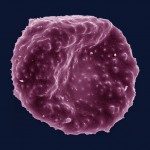Lien vers Pubmed [PMID] – 31028393
J. Infect. Dis. 2019 Apr;
BACKGROUND: Malaria ‘hotspots’ have been proposed as potential intervention units for targeted malaria elimination. Little is known about hotspot formation and stability in settings outside sub-Saharan Africa.
METHODS: Clustering of Plasmodium infections at household and hotspot level was assessed over two years in three villages in eastern Cambodia. Social and spatial autocorrelation statistics were calculated to assess clustering of malaria risk, and logistic regression was used to assess the effect of living in a malaria hotspot compared to living in a malaria-positive household in the first year of the study on risk of malaria infection in the second year.
RESULTS: The crude prevalence of Plasmodium infection was 8.4% in 2016 and 3.6% in 2017. Living in a hotspot in 2016 did not predict Plasmodium risk at individual or household level in 2017 overall, but living in a Plasmodium-positive household in 2016 strongly predicted living in a Plasmodium-positive household in 2017 (RR 5.00, 95% CI 2.09-11.96, p<0.0001). There was no consistent evidence that malaria risk clustered in groups of socially connected individuals from different households.
CONCLUSIONS: Malaria risk clustered more clearly in households than in hotspots over two years. Household-based strategies should be prioritised in malaria elimination programs in this region.


